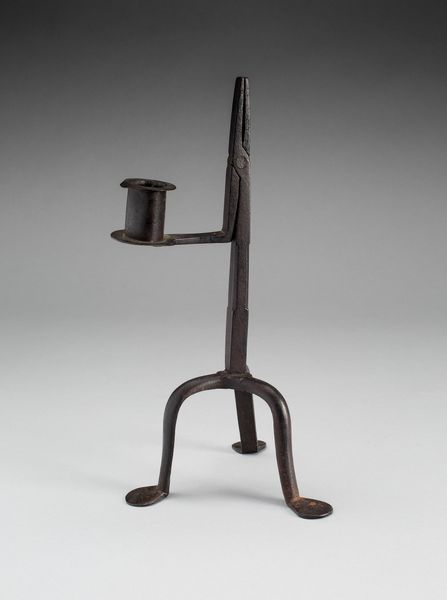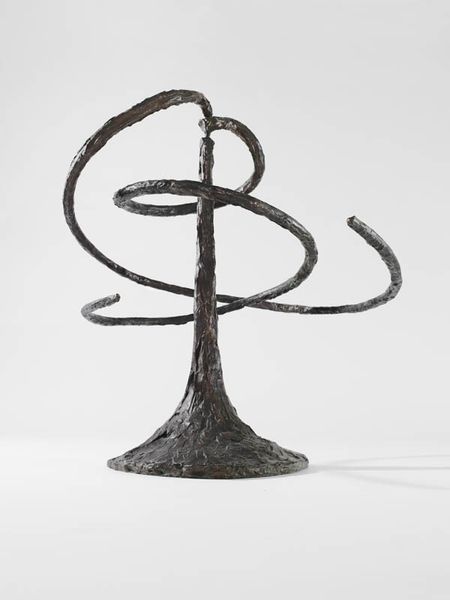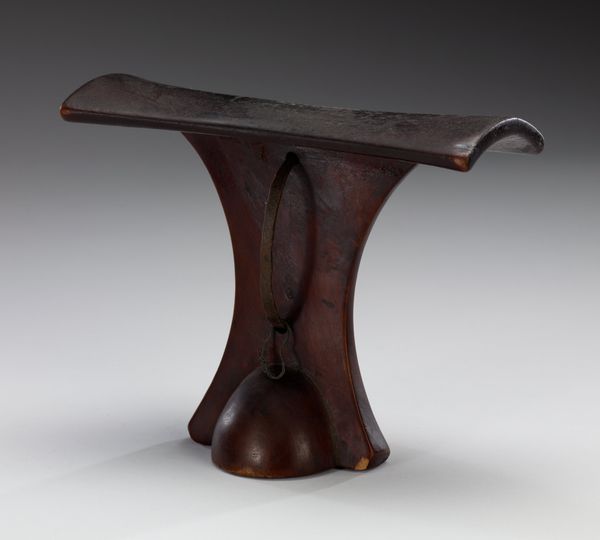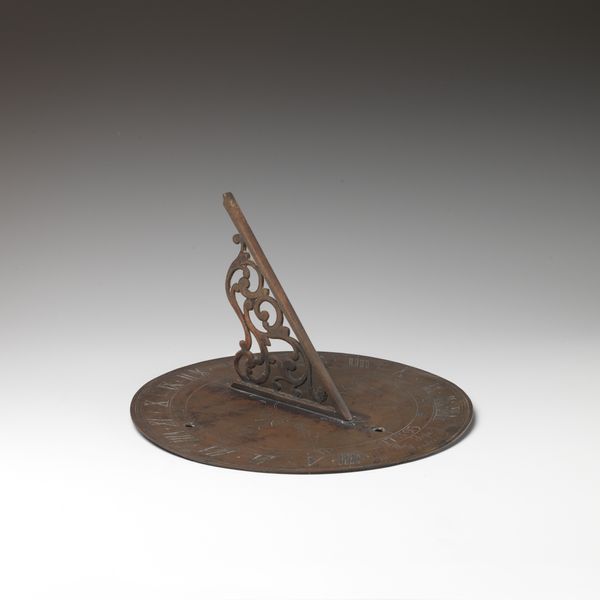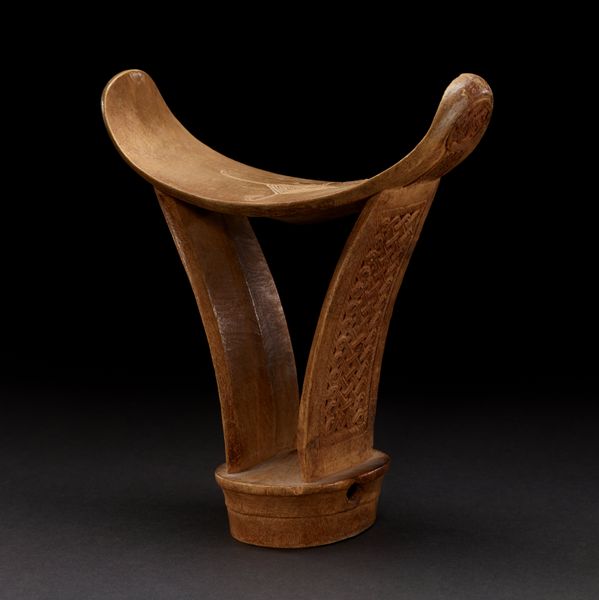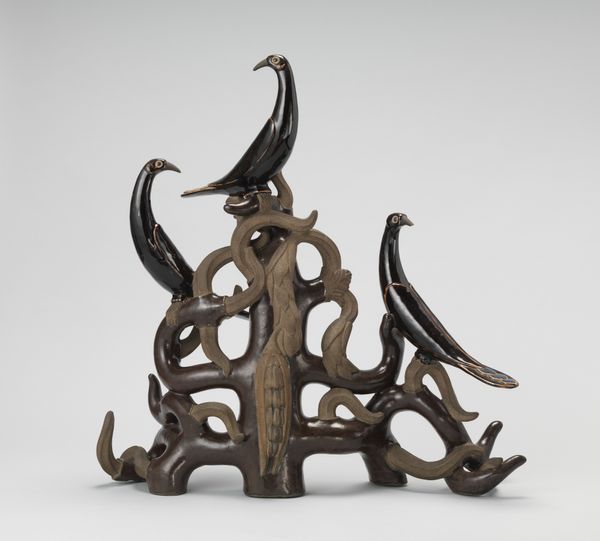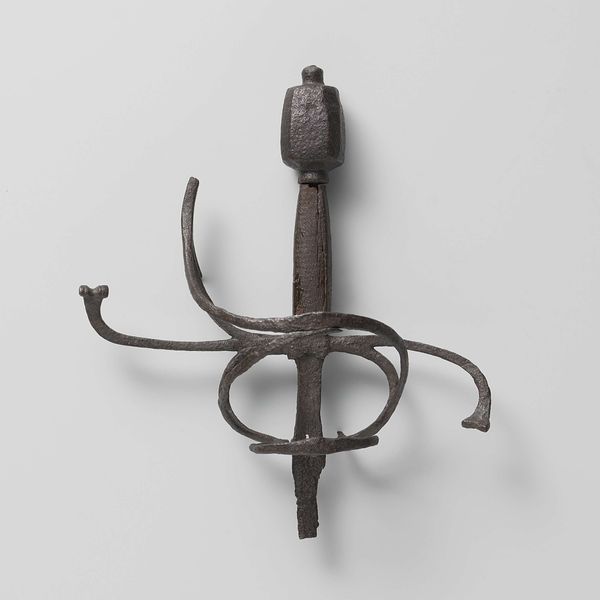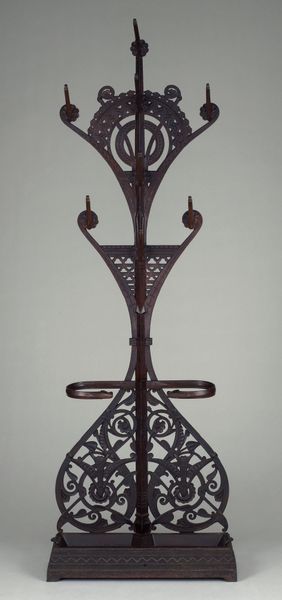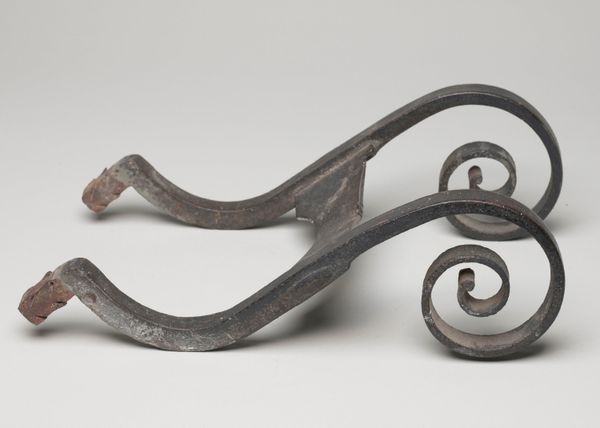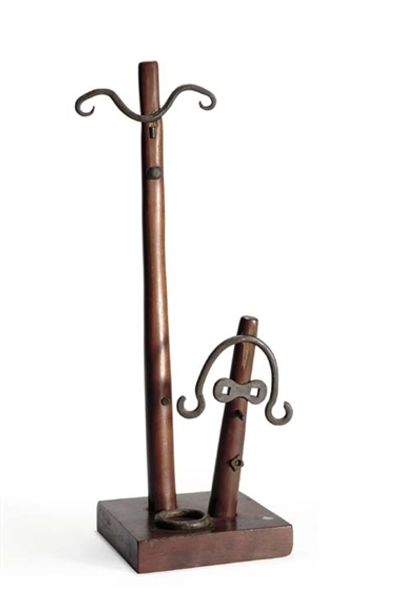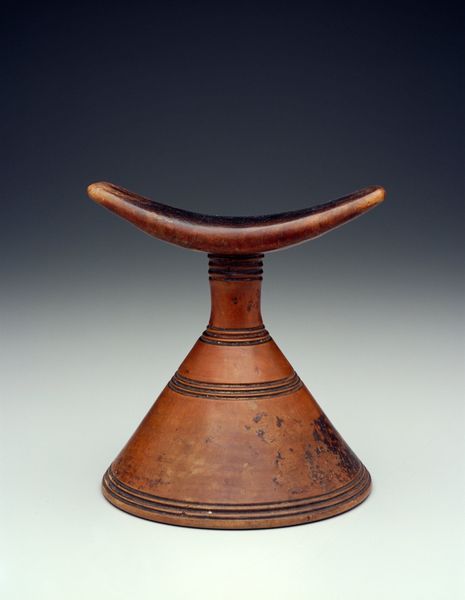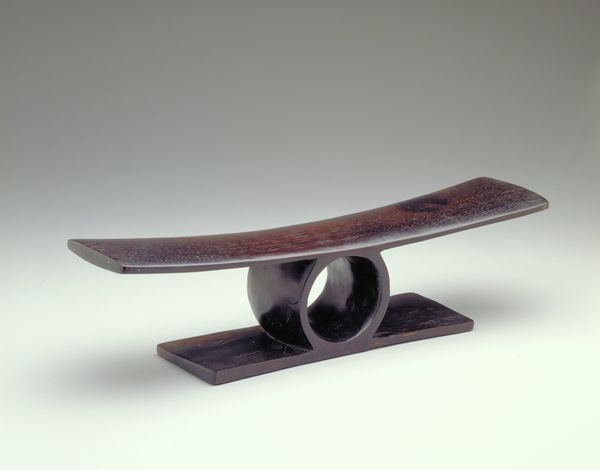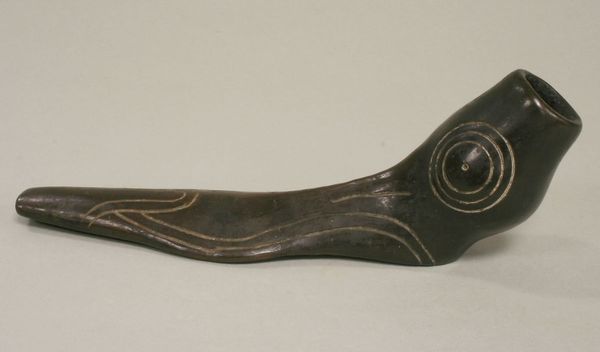
Dimensions: 24.8 ✕ 17.1 ✕ 15.2 cm (9 3/4 ✕ 6 3/4 ✕ 6 in.)
Copyright: Public Domain
Curator: Just the sight of this thing conjures a bygone era! Doesn’t it strike you as somewhat austere and primitive? Editor: It does have a severe grace. We’re looking at a rushlight holder. The Art Institute of Chicago tells us it’s an anonymous creation dating somewhere between 1750 and 1850, and crafted from metal with careful carving. Curator: Iron, most likely. The wrought iron shows both utilitarian function and aspirations toward Baroque flourishes. The curve that resolves into a tight spiral, for instance, has this sort of visual memory loaded with emotional significance. Editor: I find the tripartite base pleasingly balanced and stable—essential, given its function. That simple arc supporting the vertical post is very strong visually and structurally. Look how that tiny curl manages to suggest ornamentation without disrupting the stark lines. Curator: Indeed, light holds incredible weight for us, both as visual stimulus and metaphor. Before gas or electricity, the rushlight—a type of candle made from the pith of a rush plant dipped in fat—was the primary domestic source of illumination, especially for those who couldn't afford better candles. It really casts a long shadow, so to speak, into their cultural milieu. Editor: A poignant detail given the simple construction, isn’t it? One imagines a person of very modest means relying on it day after day. Note the texture of the metal, that hand-worked surface revealing so much about how the object was forged. Curator: Precisely. Consider its significance—both the physical act of forging such a quotidian thing as a holder for a basic source of light, and its effect on individuals who used this technology daily. Light, especially, is essential not merely for survival, but for reading, creating art, fostering society, etc. Rushlights therefore occupy this space in collective memory as metonymic to personal cultivation and interpersonal enrichment, despite limited income. Editor: It brings clarity to the phrase "burning the candle at both ends"—to use such lights into the early hours surely marked a dedicated person. Overall, it's quite spare and functional—qualities amplified by that small spiral motif. A potent contrast. Curator: Yes, reflecting on this object allows me to see connections where utility merges into cultural necessity—into personal meaning and development. Editor: I am drawn back to its material eloquence. Every facet suggests the economy of means behind the production; however, what is there has strong intent to hold fast with meaning and purpose.
Comments
No comments
Be the first to comment and join the conversation on the ultimate creative platform.
